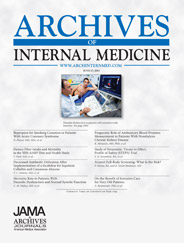 When is a retraction not a retraction? Why, when it’s a correction, of course — like the one the journal Emerging Infectious Diseases issued this month:
When is a retraction not a retraction? Why, when it’s a correction, of course — like the one the journal Emerging Infectious Diseases issued this month:
In the article Reassortment of Ancient Neuraminidase and Recent Hemagglutinin in Pandemic (H1N1) 2009 Virus (P. Bhoumik, A.L. Hughes), errors were made in selection of the hemagglutinin (HA) and neuraminidase (NA) sequences for the initial and subsequent data sets. As a result, the authors incorrectly concluded that the NA gene of the pandemic (H1N1) 2009 virus is of a more ancient lineage than the HA. Other researchers (and the authors) have not been able to reproduce the findings when using HA and NA matched pairs from viruses chosen on the basis of geography and time and correctly have pointed out errors in the data set that make the original conclusions invalid.
In other words, 1) the article was based largely on an error and 2) the central point could not be reproduced, two flaws that, at least in our book, usually constitute grounds for retraction.
The paper was written by Priyasma Bhoumik and Austin Hughes. Bhoumik, now a post-doc at Harvard, at the time was a PhD student at the University of South Carolina, where Hughes is a senior faculty member. Funding for the work came to Hughes from the National Institutes of Health, according to the original article.
We spoke with Hughes, who said that in this case, correction versus retraction is a distinction without a difference: Continue reading Retraction (in all but name) of flu paper raises eyebrows
 The journal Inhalation Toxicology has issued a fascinating correction notice covering four articles on various aspects of asbestos exposure by a group of researchers who failed to note their connection to Georgia-Pacific, the industrial giant that became caught up in a deluge of costly lawsuits over the carcinogenic chemical during the 1980s.
The journal Inhalation Toxicology has issued a fascinating correction notice covering four articles on various aspects of asbestos exposure by a group of researchers who failed to note their connection to Georgia-Pacific, the industrial giant that became caught up in a deluge of costly lawsuits over the carcinogenic chemical during the 1980s.







